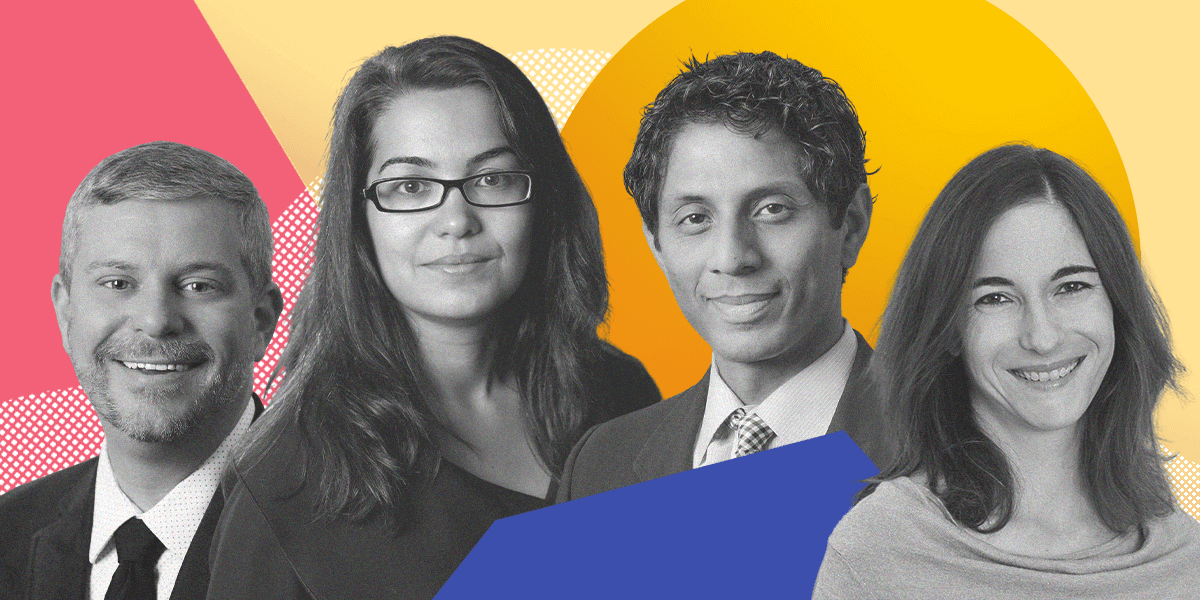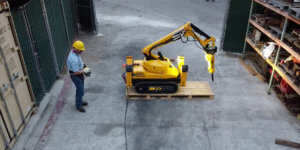
Professors Shawn Roll, Burçin Becerik-Gerber, Shri Narayanan and Gale Lucas (Image/James Kim)
The World Health Organization has called stress the “health epidemic of the 21st century” – and that was before the Covid-19 pandemic.
While a highly personalized phenomenon, job-related stress is consistently cited as the primary source of stress in adults’ lives. According to Gallup’s “State of the Global Workplace: 2022 Report,” 50 percent of workers in the United States and Canada reported experiencing “a lot” of stress during their previous workday. Similarly, the American Psychological Association identified job pressure as the biggest stressor for Americans. Clearly, long hours, heavy workloads, and tough bosses take a toll.
Stress hurts both body and soul. Musculoskeletal tension, headaches and gastrointestinal symptoms are common physical symptoms of stress, while irritability, distractibility, fatigue and lower motivation are frequent mental health symptoms. According to the American Institute of Stress, an estimated one million workers are absent from work every day due to stress, and its estimated annual costs total more than $300 billion in lost time, decreased productivity and accidents.
Until now, researchers have had little insight into the ways on-the-job activities and physical and social environments contribute to stress and other adverse health outcomes for individual workers. The USC Viterbi School of Engineering’s Burçin Becerik-Gerber, Shri Narayanan and Gale Lucas, along with lead investigator Shawn Roll, associate professor at the USC Chan Division of Occupational Science and Occupational Therapy, hope to change that.
Armed with a new four-year, $1.1 million research grant from the National Science Foundation, the interdisciplinary researchers will leverage machine learning to better understand myriad of factors that cause stress, which impacts workers’ health and performance as well as companies’ bottom lines.
“Ultimately, we’d like to figure out a way to make the office environment more peaceful, less stressful and more productive,” said Becerik-Gerber, Dean’s Professor of Civil and Environmental Engineering and a renowned expert in making buildings more responsive to human needs.
Added Roll, an ergonomics, injury prevention and productivity expert: “My career to this point has focused on addressing worker health and well-being using a broad lens to identify applications across the general workforce. But for this project, we’ll be using technologies to help individual workers understand their own stress on their own terms. It’s analogous to precision medicine – identifying what works best for each individual.”
The researchers will gather a variety of data from workers, the workplace and the environment to show how stress manifests in the workplace and workers’ lives. Those models will then help build personalized solutions for enabling workers to improve their self-awareness, better manage workplace stressors and, ultimately, improve their own work-related health and well-being.
Although the term “stress” typically carries negative connotations, the researchers recognize that there is such a thing as positive stress, also known as eustress, which can feel energizing and spark productivity. Differentiating between types of stress experiences will be a key component of the study.
Narayanan, USC University Professor and Niki and Max Nikias Chair in Engineering with appointments in Electrical and Computer Engineering, Computer Science, Linguistics, Psychology, Pediatrics, and Otolaryngology, will bring his expertise in human-centered sensing, signal processing and AI “to discover biomarkers of an individual’s stress related to work and the work environment,” he said. Such biomarkers include heart-rate variability, sweat activity, movement and stress levels self-reported by study participants.
His Signal Analysis and Interpretation Laboratory (SAIL) has longstanding expertise in creating inclusive technologies to understand the human condition and to support and enhance human experiences. The present project builds upon the recent longitudinal Tracking IndividuaLs with Sensors (TILES) project Narayanan led that focused on measuring analyzing biobehavioral patterns of stress and burnout in healthcare workers in a highly demanding hospital work environment.
Lucas, research assistant professor of computer science, civil and environmental engineering, and psychology, will focus on engaging with office workers participating in the project to ensure that researchers receive continuous feedback.
Becerik-Gerber, who also serves as chair of the Sonny Astani Department of Civil and Environmental Engineering, will collect environmental data from users through strategically placed sensors that measure temperature, light intensity, humidity and noise levels.
At the conclusion of the study, she plans to use the data to come up with possible interventions to improve the office experience for workers, a longstanding interest of hers. Some ideas Becerik-Gerber plans to investigate include how buildings impact health; how scents or pictures of nature might reduce stress; the impact that noisier hard surfaces like furniture with metal or a lack of materials that diffuse or absorb noise might have on stress levels; and if AI-powered ventilation might prevent respiratory infections and other illnesses.
On a macro level, Becerik-Gerber’s research focuses on human-building interaction, trying to understand and predict how humans interact with the built environment. She then uses this information to develop novel technologies, interfaces, tools to improve the design, construction, and system intelligence of user-centered environments as well as the human experiences within built environments.
“I have a high affinity for things, especially buildings,” said Becerik-Gerber, co-founder with Lucas of CENTIENTS, a center aimed at fostering research and collaboration toward human-centered design and integration of intelligent technologies into built environments. “Why can’t our things understand us and respond to us? Why can’t we interact with them, and they can adapt to our needs?”
Published on March 21st, 2023
Last updated on March 21st, 2023











